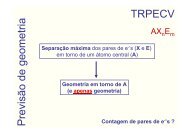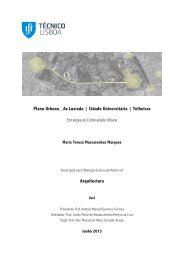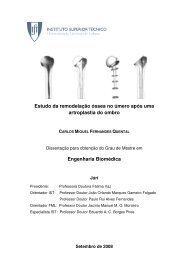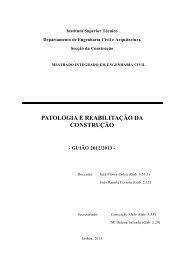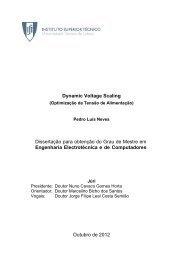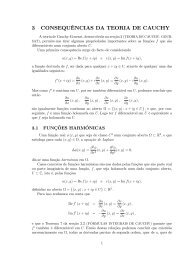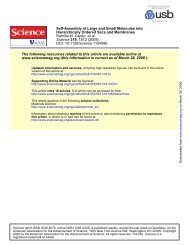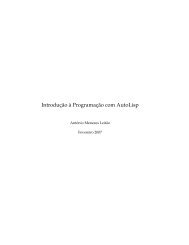dissertacao.pdf
dissertacao.pdf
dissertacao.pdf
You also want an ePaper? Increase the reach of your titles
YUMPU automatically turns print PDFs into web optimized ePapers that Google loves.
We will begin with an old method created by Fermat. This method is still<br />
relevant today, though inefficient, because it was the basis for many stronger<br />
algorithms that came later. Next we present Pollard’s ρ method, which, though<br />
much more recent, is also an obsolete algorithm that laid the basis for some more<br />
sophisticated algorithms that followed it. We finish by presenting the Elliptic<br />
Curve Method and the General Number Field Sieve, two powerful factoring<br />
algorithms, special and general purpose respectively.<br />
2.2.1 Fermat’s Factorization<br />
A very old idea to find a factor of an integer comes from Fermat. Suppose<br />
N = pq is a product of two primes. If we find two integers x, y : N = x 2 −<br />
y 2 and x − y > 1 then we have that N = (x − y)(x + y), therefore we found the<br />
two factors of N. So Fermat’s idea was to try several pairs of x, y until the first<br />
equality is verified. He created an algorithm so as to choose these trials values.<br />
We describe below the algorithm that, for an input N = pq, returns its factors:<br />
Algorithm 5. Fermat’s Factorization Algorithm<br />
Given a composite integer N,<br />
1. Set w = ⌊ √ N⌋ and x = w<br />
2. set y = ⌊ √ x 2 − n⌋<br />
3. if n = x 2 − y 2 , output x − y and x + y<br />
4. if x < n, replace x by x + 1 and go to step 2.<br />
Because we know that N is composite, the algorithm will always return its<br />
prime factors. Looking at step 4, we realize that it will try all integers from √ N<br />
to N and because of this it is actually a very slow algorithm in the worst case<br />
scenario, taking O( √ N) steps, meaning it is even worst than trial division.<br />
However, it should be noted that when applied to an RSA modulus N whose<br />
two prime factors are close to each other, the method works quite fast. In the<br />
extreme case when the factors are consecutive primes, a few seconds will be<br />
enough to find them! So, when implementing RSA, one should be aware that<br />
choosing consecutive primes will make the system vulnerable to one of the oldest<br />
factorization methods!<br />
28



